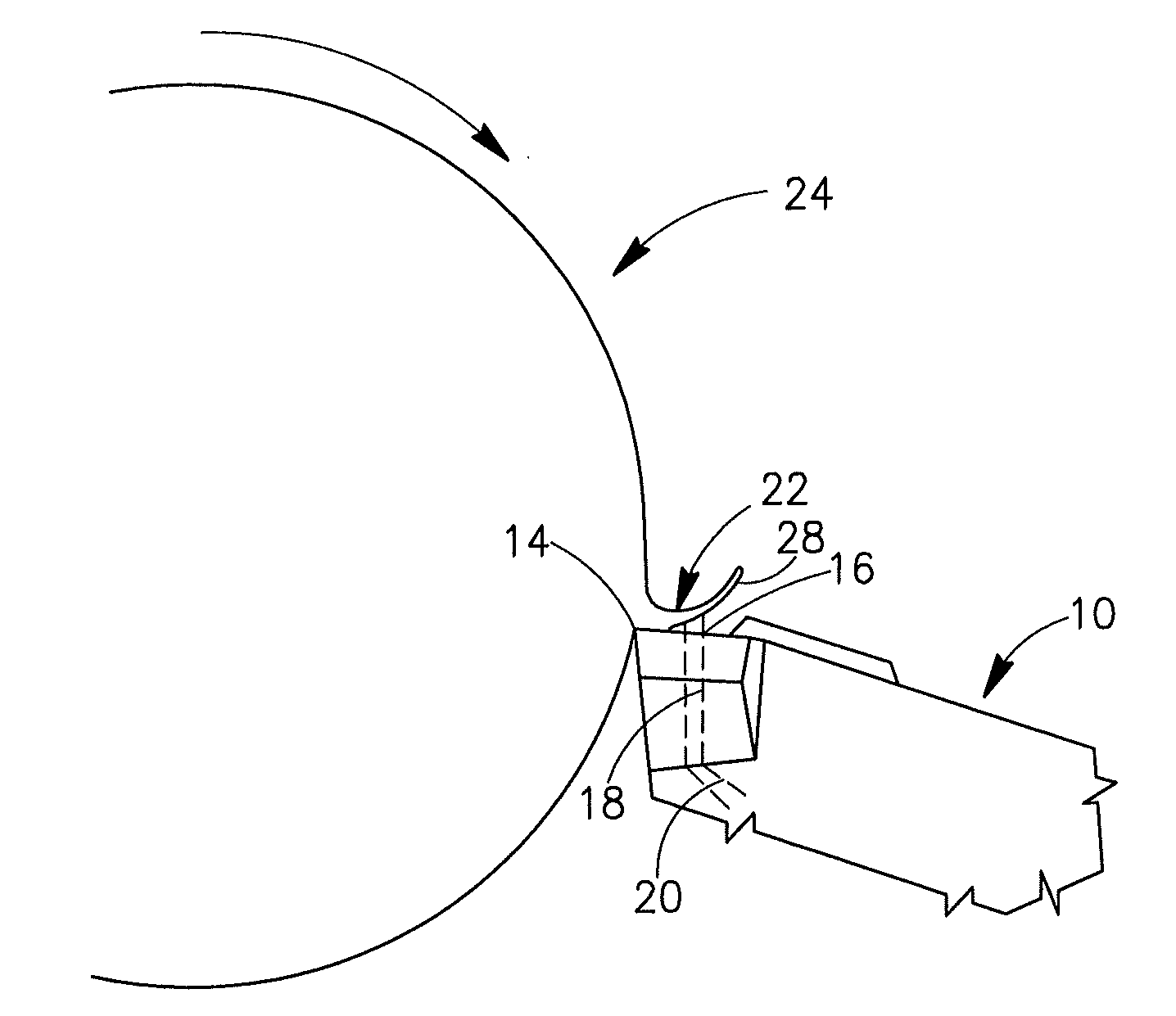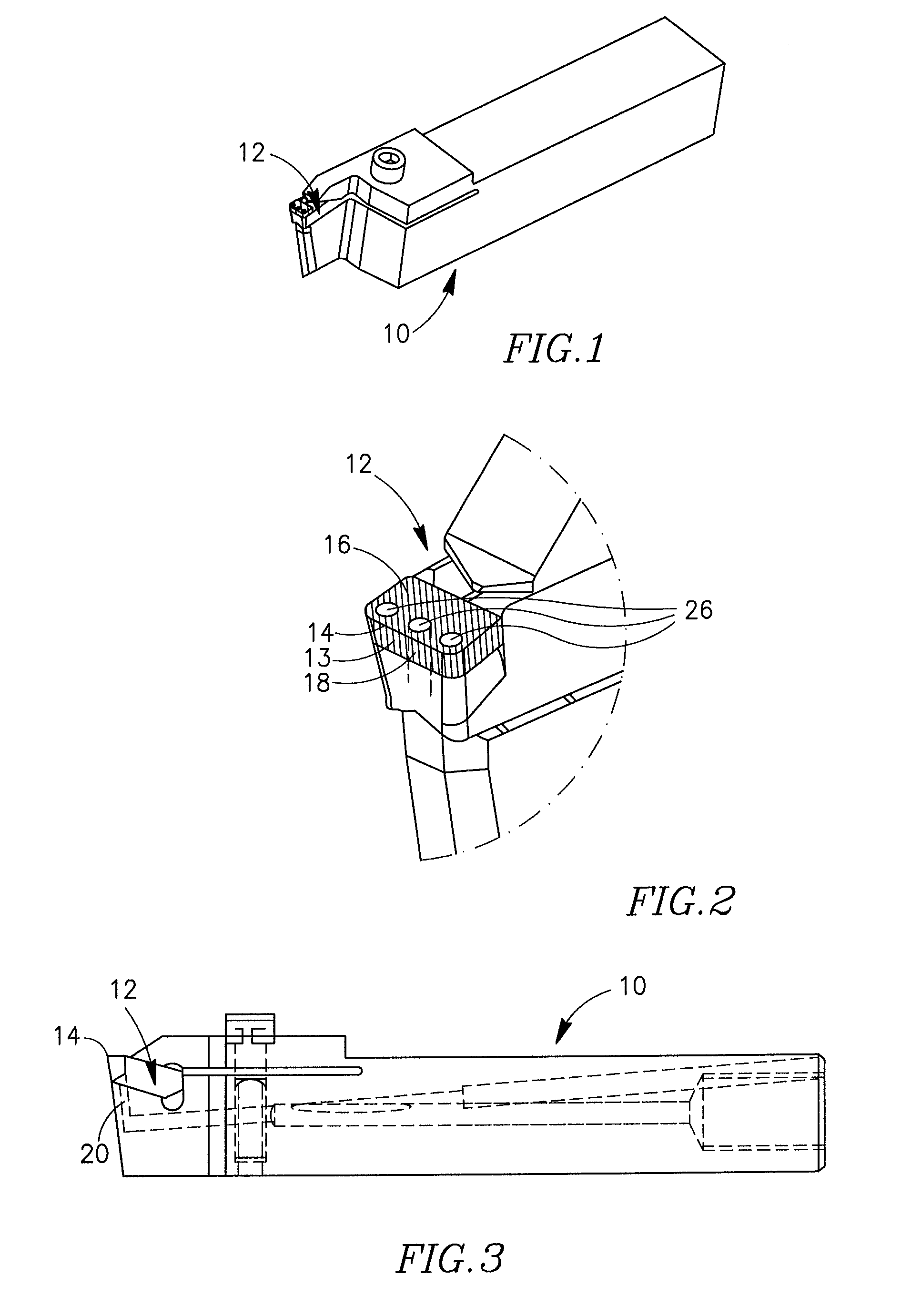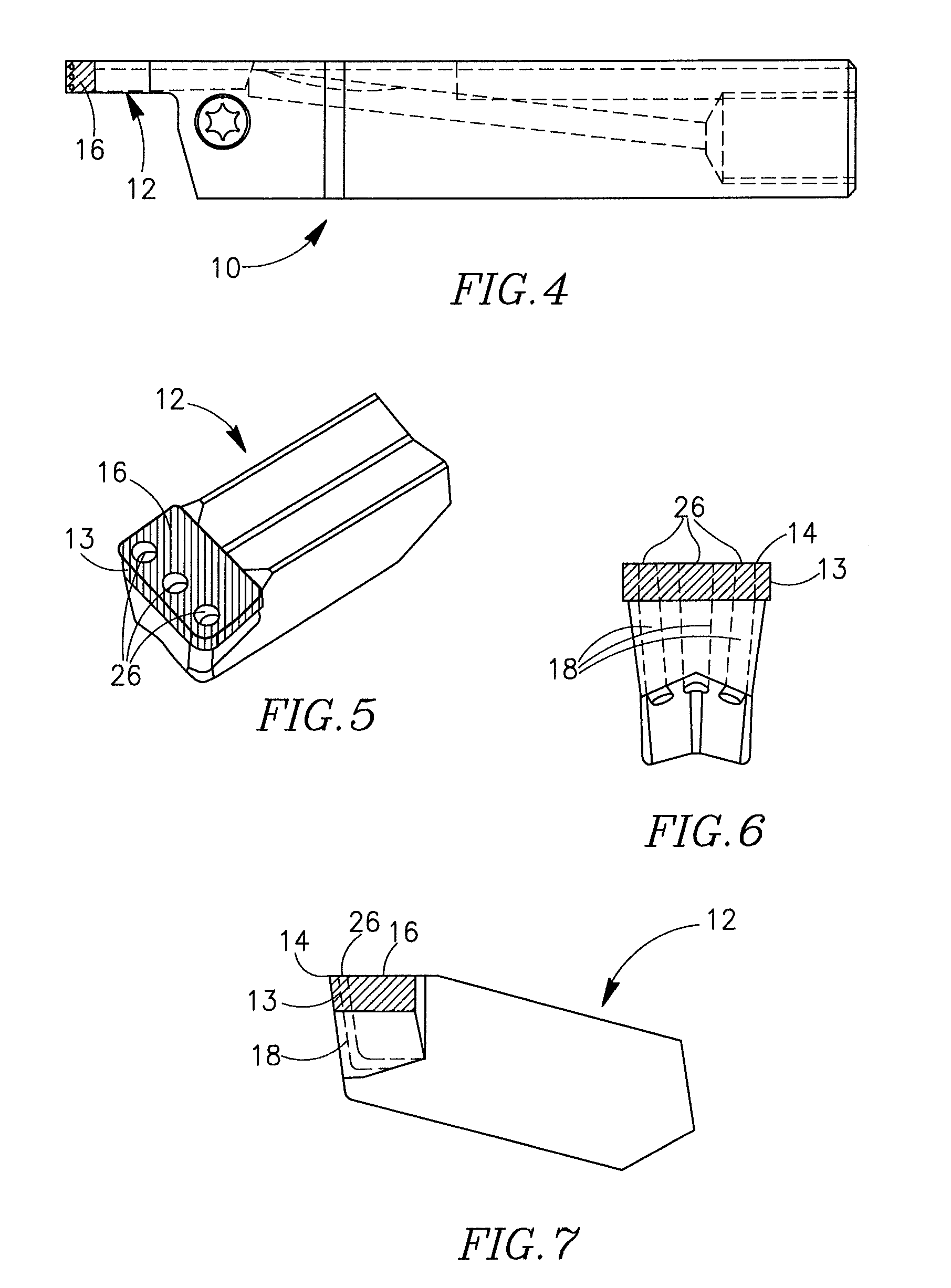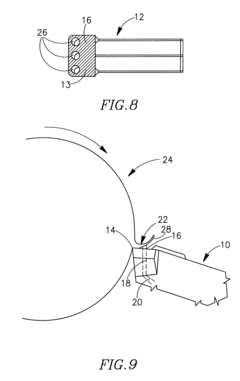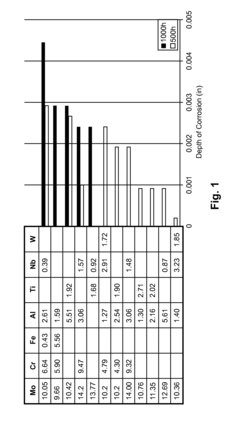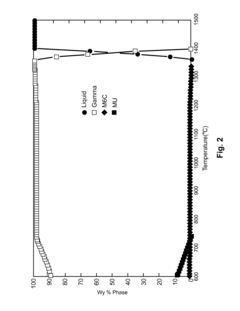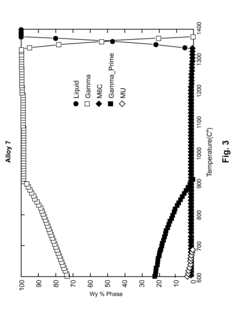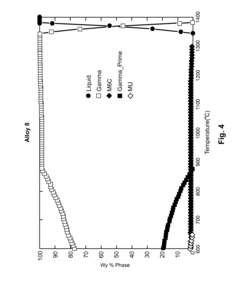How to Use Hastelloy for Cutting-Edge Industrial Designs?
JUL 10, 20259 MIN READ
Generate Your Research Report Instantly with AI Agent
Patsnap Eureka helps you evaluate technical feasibility & market potential.
Hastelloy Applications and Objectives
Hastelloy, a family of nickel-chromium-based superalloys, has emerged as a revolutionary material in cutting-edge industrial designs. Its exceptional corrosion resistance, high-temperature strength, and durability make it an ideal choice for various demanding applications across multiple industries. The primary objective of utilizing Hastelloy in industrial designs is to enhance the performance, longevity, and reliability of components and systems operating in extreme environments.
In the chemical processing industry, Hastelloy finds extensive use in the construction of reactors, heat exchangers, and piping systems. These applications aim to withstand highly corrosive chemicals, elevated temperatures, and high pressures, ensuring prolonged equipment life and minimizing maintenance downtime. The aerospace sector leverages Hastelloy's properties to develop advanced turbine engines, exhaust systems, and structural components, with the goal of improving fuel efficiency, reducing emissions, and enhancing overall aircraft performance.
The oil and gas industry employs Hastelloy in offshore platforms, subsea equipment, and downhole tools to combat the corrosive effects of seawater, hydrogen sulfide, and other aggressive substances. The objective here is to extend the operational life of critical components and ensure the safety and reliability of extraction and processing operations. In the nuclear power sector, Hastelloy is utilized in reactor vessels, fuel reprocessing equipment, and waste management systems, aiming to maintain structural integrity under intense radiation and high-temperature conditions.
The pharmaceutical and food processing industries benefit from Hastelloy's excellent resistance to organic and inorganic compounds. It is used in the construction of mixing vessels, storage tanks, and processing equipment, with the objective of maintaining product purity and preventing contamination. In the renewable energy sector, Hastelloy plays a crucial role in the development of advanced solar thermal systems, geothermal power plants, and hydrogen production facilities, supporting the transition to cleaner energy sources.
As industrial designs continue to push the boundaries of material capabilities, the application of Hastelloy is expected to expand into new frontiers. Emerging objectives include its use in additive manufacturing processes to create complex, high-performance components with optimized geometries. Additionally, researchers are exploring the potential of Hastelloy in the development of next-generation energy storage systems, such as advanced batteries and fuel cells, to improve efficiency and durability.
The ongoing evolution of Hastelloy alloys, through the fine-tuning of composition and processing techniques, aims to further enhance its properties and expand its applicability. Future objectives may include the development of Hastelloy variants with improved weldability, increased resistance to specific types of corrosion, and enhanced high-temperature mechanical properties. These advancements will enable the material to meet the ever-increasing demands of cutting-edge industrial designs across various sectors.
In the chemical processing industry, Hastelloy finds extensive use in the construction of reactors, heat exchangers, and piping systems. These applications aim to withstand highly corrosive chemicals, elevated temperatures, and high pressures, ensuring prolonged equipment life and minimizing maintenance downtime. The aerospace sector leverages Hastelloy's properties to develop advanced turbine engines, exhaust systems, and structural components, with the goal of improving fuel efficiency, reducing emissions, and enhancing overall aircraft performance.
The oil and gas industry employs Hastelloy in offshore platforms, subsea equipment, and downhole tools to combat the corrosive effects of seawater, hydrogen sulfide, and other aggressive substances. The objective here is to extend the operational life of critical components and ensure the safety and reliability of extraction and processing operations. In the nuclear power sector, Hastelloy is utilized in reactor vessels, fuel reprocessing equipment, and waste management systems, aiming to maintain structural integrity under intense radiation and high-temperature conditions.
The pharmaceutical and food processing industries benefit from Hastelloy's excellent resistance to organic and inorganic compounds. It is used in the construction of mixing vessels, storage tanks, and processing equipment, with the objective of maintaining product purity and preventing contamination. In the renewable energy sector, Hastelloy plays a crucial role in the development of advanced solar thermal systems, geothermal power plants, and hydrogen production facilities, supporting the transition to cleaner energy sources.
As industrial designs continue to push the boundaries of material capabilities, the application of Hastelloy is expected to expand into new frontiers. Emerging objectives include its use in additive manufacturing processes to create complex, high-performance components with optimized geometries. Additionally, researchers are exploring the potential of Hastelloy in the development of next-generation energy storage systems, such as advanced batteries and fuel cells, to improve efficiency and durability.
The ongoing evolution of Hastelloy alloys, through the fine-tuning of composition and processing techniques, aims to further enhance its properties and expand its applicability. Future objectives may include the development of Hastelloy variants with improved weldability, increased resistance to specific types of corrosion, and enhanced high-temperature mechanical properties. These advancements will enable the material to meet the ever-increasing demands of cutting-edge industrial designs across various sectors.
Market Demand Analysis
The market demand for Hastelloy in cutting-edge industrial designs has been steadily increasing due to its exceptional properties and versatility. This nickel-chromium-molybdenum alloy offers superior corrosion resistance, high temperature strength, and excellent fabricability, making it ideal for various advanced applications across multiple industries.
In the chemical processing sector, Hastelloy has become a material of choice for equipment exposed to highly corrosive environments. The growing demand for specialty chemicals and the need for more efficient production processes have driven the adoption of Hastelloy in reactors, heat exchangers, and piping systems. This trend is expected to continue as manufacturers seek to improve plant reliability and reduce maintenance costs.
The aerospace industry has also shown significant interest in Hastelloy for cutting-edge designs. With the push for more fuel-efficient and lightweight aircraft, Hastelloy's high strength-to-weight ratio and resistance to oxidation at elevated temperatures make it an attractive option for engine components and exhaust systems. As the aerospace sector continues to innovate, the demand for Hastelloy in this field is projected to grow.
In the energy sector, particularly in oil and gas exploration and production, Hastelloy has found increasing applications in downhole tools, wellhead components, and subsea equipment. The material's ability to withstand harsh environments, including high pressures and temperatures, as well as exposure to corrosive fluids, has made it indispensable in deep-sea and unconventional oil and gas operations.
The renewable energy industry, especially in geothermal power generation, has also contributed to the rising demand for Hastelloy. As geothermal plants operate in highly corrosive conditions, Hastelloy's resistance to sulfide stress cracking and chloride-induced stress corrosion cracking makes it an excellent choice for critical components such as heat exchangers and piping systems.
Furthermore, the pharmaceutical and food processing industries have shown growing interest in Hastelloy for cutting-edge designs in equipment and processing vessels. The alloy's resistance to a wide range of chemicals and its ability to maintain product purity have made it valuable in these sectors where contamination prevention is crucial.
The global market for Hastelloy in industrial applications is expected to expand significantly in the coming years, driven by technological advancements and the increasing need for materials that can withstand extreme conditions. As industries continue to push the boundaries of performance and efficiency, the demand for Hastelloy in cutting-edge industrial designs is likely to remain strong, with potential for further growth in emerging applications and markets.
In the chemical processing sector, Hastelloy has become a material of choice for equipment exposed to highly corrosive environments. The growing demand for specialty chemicals and the need for more efficient production processes have driven the adoption of Hastelloy in reactors, heat exchangers, and piping systems. This trend is expected to continue as manufacturers seek to improve plant reliability and reduce maintenance costs.
The aerospace industry has also shown significant interest in Hastelloy for cutting-edge designs. With the push for more fuel-efficient and lightweight aircraft, Hastelloy's high strength-to-weight ratio and resistance to oxidation at elevated temperatures make it an attractive option for engine components and exhaust systems. As the aerospace sector continues to innovate, the demand for Hastelloy in this field is projected to grow.
In the energy sector, particularly in oil and gas exploration and production, Hastelloy has found increasing applications in downhole tools, wellhead components, and subsea equipment. The material's ability to withstand harsh environments, including high pressures and temperatures, as well as exposure to corrosive fluids, has made it indispensable in deep-sea and unconventional oil and gas operations.
The renewable energy industry, especially in geothermal power generation, has also contributed to the rising demand for Hastelloy. As geothermal plants operate in highly corrosive conditions, Hastelloy's resistance to sulfide stress cracking and chloride-induced stress corrosion cracking makes it an excellent choice for critical components such as heat exchangers and piping systems.
Furthermore, the pharmaceutical and food processing industries have shown growing interest in Hastelloy for cutting-edge designs in equipment and processing vessels. The alloy's resistance to a wide range of chemicals and its ability to maintain product purity have made it valuable in these sectors where contamination prevention is crucial.
The global market for Hastelloy in industrial applications is expected to expand significantly in the coming years, driven by technological advancements and the increasing need for materials that can withstand extreme conditions. As industries continue to push the boundaries of performance and efficiency, the demand for Hastelloy in cutting-edge industrial designs is likely to remain strong, with potential for further growth in emerging applications and markets.
Hastelloy Properties and Challenges
Hastelloy, a family of nickel-chromium-based superalloys, possesses exceptional properties that make it ideal for cutting-edge industrial designs. These alloys exhibit remarkable resistance to corrosion, high temperature, and oxidation, making them suitable for extreme environments. However, their unique characteristics also present significant challenges in manufacturing and application.
One of the primary properties of Hastelloy is its outstanding corrosion resistance, particularly in highly aggressive chemical environments. This makes it an excellent choice for industries such as chemical processing, petrochemical, and nuclear power generation. The alloy's ability to withstand a wide range of acids, alkalis, and organic compounds sets it apart from conventional materials.
Hastelloy also demonstrates exceptional high-temperature strength and creep resistance. This property is crucial for applications in gas turbines, furnace components, and heat exchangers, where materials are subjected to prolonged exposure to elevated temperatures. The alloy's ability to maintain its mechanical properties at high temperatures contributes to its longevity and reliability in these demanding applications.
Despite its numerous advantages, working with Hastelloy presents several challenges. The material's high strength and work-hardening characteristics make it difficult to machine and form. Conventional cutting tools often experience rapid wear when processing Hastelloy, necessitating specialized tooling and cutting strategies. This complexity in machining can lead to increased production costs and longer lead times.
Welding Hastelloy also requires careful consideration. The alloy is prone to hot cracking and can form brittle intermetallic phases if not welded correctly. Specialized welding techniques, such as gas tungsten arc welding (GTAW) or electron beam welding, are often necessary to ensure the integrity of the welded joints.
Another challenge lies in the material's cost. Hastelloy's superior properties come at a premium price, which can be a significant factor in industrial design decisions. The high cost may limit its use to applications where its unique properties are absolutely essential, prompting designers to carefully evaluate the cost-benefit ratio.
Furthermore, the thermal expansion characteristics of Hastelloy can pose challenges in designs involving multiple materials. Engineers must account for differential thermal expansion when integrating Hastelloy components with other materials to prevent stress-induced failures or loss of dimensional stability in high-temperature applications.
In conclusion, while Hastelloy offers exceptional properties for cutting-edge industrial designs, its implementation requires careful consideration of its challenges. Designers and engineers must balance the alloy's superior performance against the complexities in manufacturing, joining, and cost to effectively leverage its potential in advanced industrial applications.
One of the primary properties of Hastelloy is its outstanding corrosion resistance, particularly in highly aggressive chemical environments. This makes it an excellent choice for industries such as chemical processing, petrochemical, and nuclear power generation. The alloy's ability to withstand a wide range of acids, alkalis, and organic compounds sets it apart from conventional materials.
Hastelloy also demonstrates exceptional high-temperature strength and creep resistance. This property is crucial for applications in gas turbines, furnace components, and heat exchangers, where materials are subjected to prolonged exposure to elevated temperatures. The alloy's ability to maintain its mechanical properties at high temperatures contributes to its longevity and reliability in these demanding applications.
Despite its numerous advantages, working with Hastelloy presents several challenges. The material's high strength and work-hardening characteristics make it difficult to machine and form. Conventional cutting tools often experience rapid wear when processing Hastelloy, necessitating specialized tooling and cutting strategies. This complexity in machining can lead to increased production costs and longer lead times.
Welding Hastelloy also requires careful consideration. The alloy is prone to hot cracking and can form brittle intermetallic phases if not welded correctly. Specialized welding techniques, such as gas tungsten arc welding (GTAW) or electron beam welding, are often necessary to ensure the integrity of the welded joints.
Another challenge lies in the material's cost. Hastelloy's superior properties come at a premium price, which can be a significant factor in industrial design decisions. The high cost may limit its use to applications where its unique properties are absolutely essential, prompting designers to carefully evaluate the cost-benefit ratio.
Furthermore, the thermal expansion characteristics of Hastelloy can pose challenges in designs involving multiple materials. Engineers must account for differential thermal expansion when integrating Hastelloy components with other materials to prevent stress-induced failures or loss of dimensional stability in high-temperature applications.
In conclusion, while Hastelloy offers exceptional properties for cutting-edge industrial designs, its implementation requires careful consideration of its challenges. Designers and engineers must balance the alloy's superior performance against the complexities in manufacturing, joining, and cost to effectively leverage its potential in advanced industrial applications.
Current Hastelloy Design Solutions
01 Composition and properties of Hastelloy alloys
Hastelloy is a family of nickel-based superalloys known for their excellent corrosion resistance and high-temperature strength. These alloys typically contain varying amounts of chromium, molybdenum, and other elements to enhance their performance in harsh environments. The specific composition and properties can be tailored for different applications, such as chemical processing, aerospace, and nuclear industries.- Composition and properties of Hastelloy alloys: Hastelloy is a family of nickel-based superalloys known for their excellent corrosion resistance and high-temperature strength. These alloys typically contain varying amounts of chromium, molybdenum, and other elements to enhance their performance in harsh environments. The specific composition and properties can be tailored for different applications, such as chemical processing, aerospace, and nuclear industries.
- Manufacturing processes for Hastelloy components: Various manufacturing processes are employed to produce Hastelloy components, including casting, forging, and powder metallurgy techniques. Advanced manufacturing methods, such as additive manufacturing or 3D printing, are also being explored to create complex Hastelloy parts with improved performance characteristics. Heat treatment and surface finishing processes are often applied to optimize the material's properties for specific applications.
- Applications of Hastelloy in corrosive environments: Hastelloy alloys are widely used in industries where corrosion resistance is critical. They are particularly suitable for applications involving aggressive chemicals, high temperatures, and pressure. Common uses include heat exchangers, piping systems, and reactor vessels in chemical processing plants, as well as components in offshore oil and gas production facilities. The alloy's resistance to pitting, crevice corrosion, and stress corrosion cracking makes it valuable in these challenging environments.
- Welding and joining techniques for Hastelloy: Specialized welding and joining techniques are required for Hastelloy components due to their unique properties. Gas tungsten arc welding (GTAW), gas metal arc welding (GMAW), and electron beam welding are commonly used methods. Proper selection of filler materials, pre-heating, and post-weld heat treatment are crucial to maintain the alloy's corrosion resistance and mechanical properties in the welded areas. Advanced joining techniques, such as friction stir welding, are also being investigated for Hastelloy applications.
- Surface treatment and coating of Hastelloy: Various surface treatment and coating techniques are applied to Hastelloy components to further enhance their performance or to impart specific properties. These may include electroplating, thermal spraying, or the application of ceramic coatings. Surface treatments can improve wear resistance, reduce friction, or provide additional corrosion protection. In some cases, surface modifications are used to create specialized functional surfaces for catalytic or other applications.
02 Manufacturing processes for Hastelloy components
Various manufacturing processes are employed to produce Hastelloy components, including casting, forging, and powder metallurgy techniques. Advanced manufacturing methods such as additive manufacturing and precision machining are also used to create complex Hastelloy parts with specific geometries and properties. Heat treatment processes are often applied to optimize the microstructure and mechanical properties of the final products.Expand Specific Solutions03 Applications of Hastelloy in corrosive environments
Hastelloy alloys are widely used in industries where corrosion resistance is critical. They are employed in chemical processing equipment, heat exchangers, and piping systems exposed to aggressive chemicals and high temperatures. The alloys' resistance to pitting, crevice corrosion, and stress corrosion cracking makes them suitable for use in offshore oil and gas production, desalination plants, and pollution control systems.Expand Specific Solutions04 Welding and joining techniques for Hastelloy
Specialized welding and joining techniques are required for Hastelloy components due to their unique properties. Gas tungsten arc welding (GTAW), gas metal arc welding (GMAW), and electron beam welding are commonly used methods. Proper selection of filler materials, pre-heating, and post-weld heat treatment are essential to maintain the alloy's corrosion resistance and mechanical properties in the welded areas.Expand Specific Solutions05 Surface treatment and coating of Hastelloy
Various surface treatment and coating techniques are applied to Hastelloy components to further enhance their performance or provide specific surface properties. These may include electroplating, thermal spraying, and the application of ceramic or polymer coatings. Surface treatments can improve wear resistance, reduce friction, or provide additional corrosion protection in specific environments.Expand Specific Solutions
Key Hastelloy Manufacturers
The competitive landscape for using Hastelloy in cutting-edge industrial designs is characterized by a mature market with established players and ongoing innovation. The global Hastelloy market size is projected to reach several billion dollars by 2025, driven by increasing demand in aerospace, chemical processing, and energy sectors. Companies like Mitsubishi Materials, Nucor, and U.S. Steel are at the forefront of developing advanced Hastelloy alloys and manufacturing processes. Research institutions such as the University of Science & Technology Beijing and City University of Hong Kong are contributing to technological advancements. The industry is seeing a shift towards more specialized and high-performance Hastelloy variants, with companies like Siemens Energy and Hitachi focusing on applications in extreme environments and renewable energy technologies.
BASF Corp.
Technical Solution: BASF has utilized Hastelloy in cutting-edge industrial designs, particularly in the chemical processing and pharmaceutical industries. They have developed a range of Hastelloy-lined equipment and reactors that offer exceptional corrosion resistance in aggressive chemical environments. BASF's approach involves advanced computational fluid dynamics (CFD) modeling to optimize the design of Hastelloy-lined vessels, ensuring uniform flow distribution and minimizing areas of potential corrosion[9]. They have also implemented a novel coating process for Hastelloy components, using plasma-enhanced chemical vapor deposition (PECVD) to apply ultra-thin, highly adherent protective layers that further enhance corrosion resistance and reduce material costs[10]. Additionally, BASF has developed a proprietary method for repairing and refurbishing Hastelloy equipment in situ, using laser cladding technology to apply new Hastelloy material to worn or damaged areas, extending the lifespan of critical industrial components.
Strengths: Optimized designs for chemical processing applications; innovative coating and repair techniques. Weaknesses: High initial cost for Hastelloy-lined equipment; potential for coating delamination in extreme conditions.
United States Steel Corp.
Technical Solution: U.S. Steel has incorporated Hastelloy into their cutting-edge industrial designs, particularly for applications in harsh chemical environments and high-temperature processes. They have developed a proprietary heat treatment process for Hastelloy components that enhances their mechanical properties and corrosion resistance. This process involves carefully controlled heating and cooling cycles, resulting in optimized grain structures and improved overall performance[7]. U.S. Steel has also implemented advanced surface modification techniques for Hastelloy, such as nitriding and carburizing, to create tailored surface properties for specific applications. Additionally, they have developed a novel joining method for Hastelloy to dissimilar metals, using a combination of diffusion bonding and transient liquid phase bonding, which allows for the creation of complex multi-material assemblies with superior interface properties[8].
Strengths: Enhanced mechanical and corrosion-resistant properties through heat treatment; ability to create multi-material assemblies. Weaknesses: Energy-intensive heat treatment processes; potential for property variations in large components.
Innovative Hastelloy Techniques
Method of Grooving Superalloys and Cutting Insert Therefor
PatentActiveUS20100175519A1
Innovation
- A cutting insert with a CBN layer and interior ducts that direct high-pressure coolant fluid directly to the cutting edge, allowing for cutting speeds of 200-500 meters per minute with improved surface quality and chip formation.
High Strength Alloys for High Temperature Service in Liquid-Salt Cooled Energy Systems
PatentActiveUS20140271338A1
Innovation
- Development of a cobalt-free alloy with specific weight percent compositions, including Cr, Al, Fe, Mn, Mo, Ta, Ti, Nb, W, C, B, and N, that achieves high yield and tensile strengths, creep rupture life, and resistance to liquid fluoride salt corrosion through γ′ microstructural components and solid solution strengthening, while avoiding brittle intermetallic phases.
Environmental Impact Assessment
The use of Hastelloy in cutting-edge industrial designs necessitates a comprehensive environmental impact assessment. Hastelloy, a nickel-chromium-molybdenum alloy known for its exceptional corrosion resistance and strength, offers significant advantages in various industrial applications. However, its production, use, and disposal can have notable environmental implications.
The manufacturing process of Hastelloy involves energy-intensive methods and the extraction of raw materials, which can contribute to greenhouse gas emissions and resource depletion. The mining of nickel, chromium, and molybdenum, key components of Hastelloy, can lead to habitat destruction, soil erosion, and water pollution if not managed responsibly. Additionally, the refining and alloying processes require substantial energy inputs, potentially increasing the carbon footprint of the final product.
During the use phase, Hastelloy's durability and corrosion resistance can have positive environmental impacts. Its longevity reduces the need for frequent replacements, thereby minimizing waste generation and resource consumption over time. In industrial settings, Hastelloy's ability to withstand harsh environments can prevent leaks and spills, reducing the risk of environmental contamination.
End-of-life considerations for Hastelloy products are crucial from an environmental perspective. While the alloy is highly recyclable, the recycling process itself can be energy-intensive and may produce emissions. However, the high value of the constituent metals incentivizes recycling efforts, potentially leading to a more circular economy approach in industrial design.
The use of Hastelloy in cutting-edge designs may also indirectly impact the environment through improved efficiency and performance of industrial processes. For instance, in chemical processing or energy production, Hastelloy components can enable more efficient operations, potentially reducing overall energy consumption and emissions.
It is important to consider the potential for leaching of heavy metals from Hastelloy components in certain environments. While the alloy is generally stable, extreme conditions or improper disposal could lead to the release of nickel or chromium into ecosystems, posing risks to wildlife and human health.
To mitigate environmental impacts, designers and engineers should focus on optimizing the use of Hastelloy, maximizing its benefits while minimizing material usage. Life cycle assessments should be conducted to compare Hastelloy-based designs with alternatives, ensuring that the environmental benefits outweigh the costs throughout the product's life cycle. Additionally, implementing robust recycling programs and exploring more sustainable manufacturing processes can further reduce the environmental footprint of Hastelloy in industrial applications.
The manufacturing process of Hastelloy involves energy-intensive methods and the extraction of raw materials, which can contribute to greenhouse gas emissions and resource depletion. The mining of nickel, chromium, and molybdenum, key components of Hastelloy, can lead to habitat destruction, soil erosion, and water pollution if not managed responsibly. Additionally, the refining and alloying processes require substantial energy inputs, potentially increasing the carbon footprint of the final product.
During the use phase, Hastelloy's durability and corrosion resistance can have positive environmental impacts. Its longevity reduces the need for frequent replacements, thereby minimizing waste generation and resource consumption over time. In industrial settings, Hastelloy's ability to withstand harsh environments can prevent leaks and spills, reducing the risk of environmental contamination.
End-of-life considerations for Hastelloy products are crucial from an environmental perspective. While the alloy is highly recyclable, the recycling process itself can be energy-intensive and may produce emissions. However, the high value of the constituent metals incentivizes recycling efforts, potentially leading to a more circular economy approach in industrial design.
The use of Hastelloy in cutting-edge designs may also indirectly impact the environment through improved efficiency and performance of industrial processes. For instance, in chemical processing or energy production, Hastelloy components can enable more efficient operations, potentially reducing overall energy consumption and emissions.
It is important to consider the potential for leaching of heavy metals from Hastelloy components in certain environments. While the alloy is generally stable, extreme conditions or improper disposal could lead to the release of nickel or chromium into ecosystems, posing risks to wildlife and human health.
To mitigate environmental impacts, designers and engineers should focus on optimizing the use of Hastelloy, maximizing its benefits while minimizing material usage. Life cycle assessments should be conducted to compare Hastelloy-based designs with alternatives, ensuring that the environmental benefits outweigh the costs throughout the product's life cycle. Additionally, implementing robust recycling programs and exploring more sustainable manufacturing processes can further reduce the environmental footprint of Hastelloy in industrial applications.
Cost-Benefit Analysis
When considering the use of Hastelloy in cutting-edge industrial designs, a thorough cost-benefit analysis is crucial for decision-making. The initial investment in Hastelloy materials is significantly higher compared to conventional alloys, with prices ranging from 5 to 10 times that of stainless steel. This substantial upfront cost can be a deterrent for many manufacturers, especially those operating on tight budgets or in price-sensitive markets.
However, the long-term benefits of using Hastelloy often outweigh the initial expenses. The exceptional corrosion resistance of Hastelloy translates into extended equipment lifespan, reduced maintenance costs, and fewer replacements. In harsh industrial environments, where corrosive chemicals or extreme temperatures are present, Hastelloy components can last up to 3-5 times longer than their stainless steel counterparts. This longevity results in significant savings over time, as the frequency of equipment replacement and associated downtime is drastically reduced.
The superior performance of Hastelloy also contributes to improved process efficiency and product quality. Its ability to withstand high temperatures and resist corrosion allows for more aggressive processing conditions, potentially increasing throughput and yield. In industries such as chemical processing or oil and gas, where equipment failure can lead to costly shutdowns or safety hazards, the reliability of Hastelloy can provide substantial risk mitigation benefits.
Energy efficiency is another factor to consider. Hastelloy's excellent heat transfer properties can lead to improved thermal efficiency in heat exchangers and other process equipment. This can result in lower energy consumption and reduced operating costs over the lifetime of the equipment. Additionally, the material's resistance to fouling and scaling can maintain optimal performance for longer periods, further enhancing energy efficiency.
From a sustainability perspective, the use of Hastelloy aligns with the growing emphasis on lifecycle analysis and environmental impact. While the production of Hastelloy is energy-intensive, its durability and recyclability contribute to a lower overall environmental footprint when considering the entire lifecycle of industrial equipment. The reduced need for replacements and the potential for recycling at the end of life can offset the initial environmental costs associated with production.
In conclusion, while the upfront costs of incorporating Hastelloy into cutting-edge industrial designs are substantial, the long-term benefits in terms of durability, performance, and efficiency often justify the investment. A comprehensive cost-benefit analysis should consider not only the initial material costs but also factors such as maintenance savings, operational improvements, risk reduction, and environmental impact over the entire lifecycle of the equipment or product.
However, the long-term benefits of using Hastelloy often outweigh the initial expenses. The exceptional corrosion resistance of Hastelloy translates into extended equipment lifespan, reduced maintenance costs, and fewer replacements. In harsh industrial environments, where corrosive chemicals or extreme temperatures are present, Hastelloy components can last up to 3-5 times longer than their stainless steel counterparts. This longevity results in significant savings over time, as the frequency of equipment replacement and associated downtime is drastically reduced.
The superior performance of Hastelloy also contributes to improved process efficiency and product quality. Its ability to withstand high temperatures and resist corrosion allows for more aggressive processing conditions, potentially increasing throughput and yield. In industries such as chemical processing or oil and gas, where equipment failure can lead to costly shutdowns or safety hazards, the reliability of Hastelloy can provide substantial risk mitigation benefits.
Energy efficiency is another factor to consider. Hastelloy's excellent heat transfer properties can lead to improved thermal efficiency in heat exchangers and other process equipment. This can result in lower energy consumption and reduced operating costs over the lifetime of the equipment. Additionally, the material's resistance to fouling and scaling can maintain optimal performance for longer periods, further enhancing energy efficiency.
From a sustainability perspective, the use of Hastelloy aligns with the growing emphasis on lifecycle analysis and environmental impact. While the production of Hastelloy is energy-intensive, its durability and recyclability contribute to a lower overall environmental footprint when considering the entire lifecycle of industrial equipment. The reduced need for replacements and the potential for recycling at the end of life can offset the initial environmental costs associated with production.
In conclusion, while the upfront costs of incorporating Hastelloy into cutting-edge industrial designs are substantial, the long-term benefits in terms of durability, performance, and efficiency often justify the investment. A comprehensive cost-benefit analysis should consider not only the initial material costs but also factors such as maintenance savings, operational improvements, risk reduction, and environmental impact over the entire lifecycle of the equipment or product.
Unlock deeper insights with Patsnap Eureka Quick Research — get a full tech report to explore trends and direct your research. Try now!
Generate Your Research Report Instantly with AI Agent
Supercharge your innovation with Patsnap Eureka AI Agent Platform!
